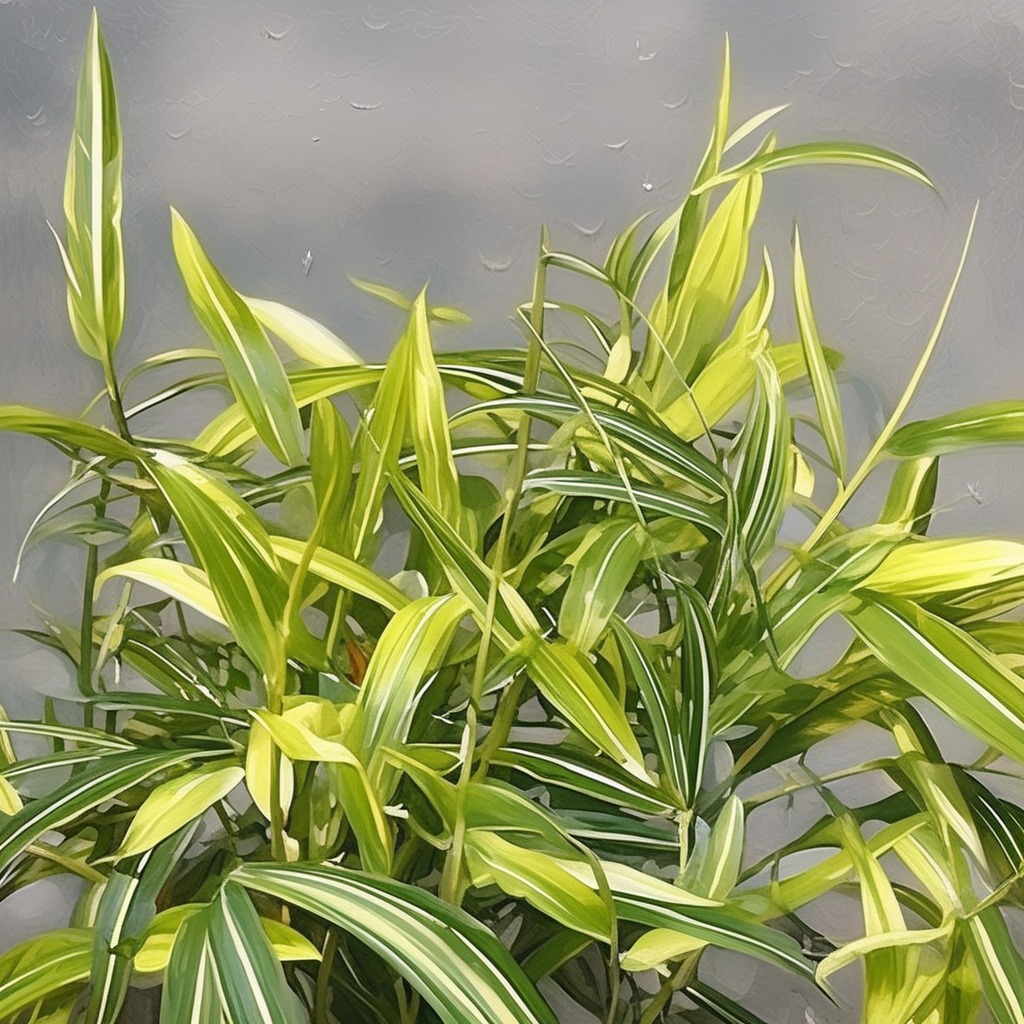Bamboo, a versatile and rapidly growing grass, has surged in popularity over the past two decades. With around 1,400 different species, bamboo’s adaptability and quick growth make it a preferred material for various products, ranging from cutting boards and toys to eco-friendly clothing. However, bamboo plant identification can be challenging, with some species being non-invasive while others pose a potential threat to your garden’s well-being.
The Two Faces of Bamboo: Running vs. Clumping
Running Bamboo
Running bamboo, notorious for its invasive nature, develops rhizomes underground that extend away from the initial plant. Each rhizome can sprout a separate culm or stem, rapidly spreading throughout your garden. Identifying running bamboo involves observing the shape and size of leaves, stem characteristics, and the intricate root system.
Clumping Bamboo
In contrast, clumping bamboo tends to stay confined to a specific area, making it easier to manage. Identifying this type is relatively straightforward as it forms a compact grouping within the garden. Understanding the distinction between these two types is crucial for effective bamboo identification and management.
The Challenge of Invasiveness
The rapid growth of running bamboo can be a cause for concern, especially for UK properties. Depending on the bamboo species, its invasiveness can vary, potentially leading to issues such as damage to patios, paths, and even neighbouring properties. While bamboo is not currently classified as an invasive species like Japanese knotweed, it has caught the attention of mortgage companies, prompting closer scrutiny.
Legal Implications and Property Concerns
Instances of legal action between neighbours have arisen due to bamboo spreading from one property to another. For those contemplating property purchases where bamboo is present, a thorough survey is advisable to assess the extent of the issue and uncover any potential underlying problems.
Bamboo Anatomy: Leaves, Stems, and Roots
Bamboo Leaves: Aesthetic and Practical Features
Bamboo leaves come in various shapes and sizes, typically resembling a lance or spear that tapers to a point. Beyond their aesthetic appeal, these sturdy, leathery leaves find uses in Asian cuisine, traditional medicine, and construction. While most bamboo leaves are green, some species boast variegated leaves with white or pale green stripes.
Bamboo Stems: Above-Ground Distinctiveness
The most distinctive feature of bamboo is its stem or culm, which is usually rounded and thick. Horizontal nodes along the stem create a unique ridge, from which branches may emerge. Smooth stems are common in most bamboo species, but the Phyllostachys group stands out with a defined ridge or groove on the stem.
Bamboo Roots: The Unseen Challenge
Below the surface, rhizomes play a critical role in bamboo’s invasive potential. These underground structures spread horizontally and, in the case of running bamboo, may take over a garden, damaging other plants and even infiltrating building foundations. Shallow initially, these rhizomes become resilient and challenging to remove once established.
Species Spotlight: Understanding Different Bamboo Varieties
Phyllostachys: The Grooved Culm Family
Phyllostachys, with about 50 different species, is a prominent running bamboo family. Notable members, such as P. aurea and P. nigra, exhibit rapid growth, spreading quickly and reaching considerable heights. While visually striking, they require careful management to prevent uncontrolled expansion.

Sasa & Sasaella: Variegated Beauty with Caution
Known as Japanese bamboo, Sasa and Sasaella feature variegated leaves with white and green stripes. While visually appealing for ornamental purposes, these varieties can form spreading clumps that reach heights of about 2 metres, requiring containment to avoid overgrowth.

Bashania: The Tall Olive-Stemmed Bamboo
Less common in the UK, Bashania bamboo can grow over 7 metres tall. Characterised by deep olive stems and leaves, it is often used for hedges or screens. Proper management is essential to prevent its invasive tendencies, especially in warm and moist conditions.

Pleioblastus: Ground Cover with Vigor
Pleioblastus varieties, considered dwarf bamboos, find popularity as ground cover. Despite their small size, they exhibit robust growth and can become invasive, spreading through the root systems of other plants. Vigilant management is key to prevent their encroachment on borders.

Height and Growth: The Bamboo Landscape
How Tall Does Bamboo Grow?
The height of bamboo varies among species, with some reaching a few metres and others soaring to impressive heights. Dendrocalamus sinicus, the largest species not seen in the UK, can grow to almost 50 metres, akin to the size of two tennis courts.
Speedy Growth: A Bamboo Characteristic
Bamboo’s rapid growth is one of its defining features. Depending on the species, it can grow as much as 91 centimetres in 24 hours. Clumping bamboo varieties typically grow 1 to 2 feet per year, while the more vigorous running bamboo can extend up to 3 to 4 feet in a year, posing a challenge for containment.
Managing Bamboo in Your Garden
Identifying the type of bamboo in your garden is crucial for understanding its invasive potential and devising an effective management strategy. While bamboo can add aesthetic value to your garden, it’s essential to prevent uncontrolled growth, especially with running bamboo varieties.
Professional Removal: The Right Solution
If you’ve identified bamboo in your garden and wish to eliminate it, engaging a specialist team is a prudent choice. Professional teams possess the necessary tools and equipment to handle bamboo removal, particularly crucial for extensive growth covering large areas.
Conclusion
In summary, navigating the world of bamboo identification is a multifaceted task. From understanding the characteristics of different species to managing their growth effectively, homeowners can safeguard their gardens from the potential invasiveness of bamboo. Whether you’re an avid gardener or a prospective property buyer, being well-informed about bamboo varieties and their behaviours ensures a thriving and controlled garden environment.
Resources
These resources from reputable UK organisations provide more details on bamboo species, identification tips, legal considerations, and professional management recommendations that would be valuable for readers to learn more after reading this introductory article. The guidelines for invasive plants are also useful for understanding bamboo control approaches.
- Royal Horticultural Society (RHS) Bamboo Grower’s Guides https://www.rhs.org.uk/search?query=bamboo&referrerPageUrl=https:%2F%2Fwww.rhs.org.uk%2Fplants%2Fbamboo%2F
- Property Care Association – Guidelines for the Management of Bamboo https://www.property-care.org/homeowners/advice/invasive-weeds/bamboo
- Gov.uk – Prevent Invasive Non-native Plants From Spreading https://www.gov.uk/guidance/prevent-the-spread-of-harmful-invasive-and-non-native-plants









